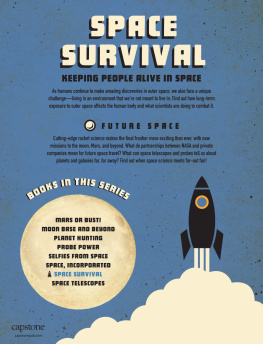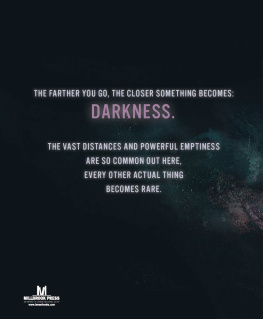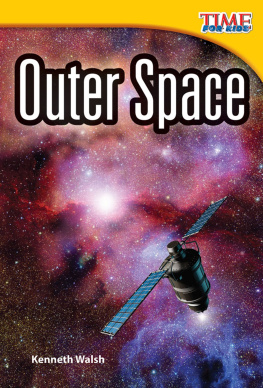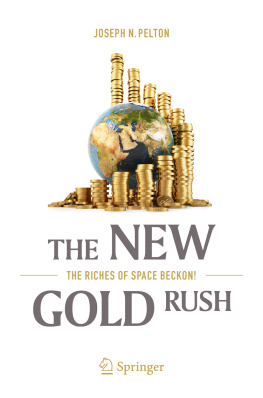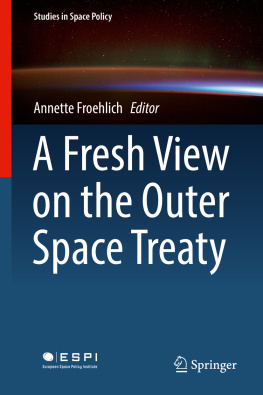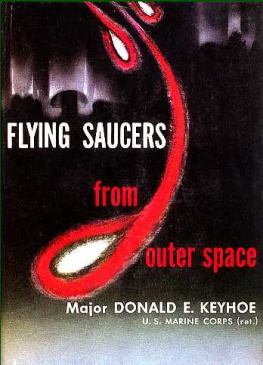Joseph N. Pelton SpringerBriefs in Space Development Space Debris and Other Threats from Outer Space 2013 10.1007/978-1-4614-6714-4_1 Joseph N. Pelton 2013
1. Serious Threats from Outer Space
What Space Threats Should Concern Us Most?
Have you ever wondered if you might be hit by a piece of space junk falling out of the sky? Well not to worry. The chances of being hit by a piece of orbital debris or a meteorite are fewer than your getting the worlds rarest disease or being killed by a falling coconut if you only visited a tropical paradise for only 1 h in your entire lifetime. In over a half century of space activities there is perhaps one instance of a cow being killed in Africa and that was many decades ago. More recently in 1997 a woman was reportedly brushed on the shoulder by a lightweight fragment of space debris falling from the skies.
But there is still a very good reason for you to read this book. In fact, there are serious threats from space that are actually of mounting concern that you should know about and what actions could be taken to forestall these threats. The growing amount of space debris in the skies could make it difficult in the future to access space for many crucial applications, such as communications, navigation, remote sensing, weather forecasting, military surveillance, nuclear monitoring, or even space exploration. A surprising amount of the world scientific, economic and military activities are now based on spacecraft operations. Solar radiation that penetrates the ozone layer can and indeed does cause skin cancer, and currently occurring changes to the ozone layer are elevating this concern. The most intensive cosmic radiation from gamma rays if unchecked and sustained can also trigger harmful and even bizarre mutations of our genes so as to prevent healthy and normal reproduction.
Solar flares or coronal mass ejections could kill astronauts or wipe out our electrical grids in a powerful and instantaneous way, as happened as recently as March 1989. Although very unlikely, a massive and potentially harmful near-Earth asteroid could destroy much of life on Earth, as was the case with the so-called K-T event (i.e., the Cretaceous Tertiary Mass Extinction Event) that fortunately occurred some 65 million years ago. This single calamitous cosmic occurrence caused between 65 and 70 % of all species on Earth to be killedincluding the dinosaursin what is known simply as a mass extinction event [1]. On the scale of bad things to happen, this would be very, very bad indeed.
However, lets start at the beginning to recap what has happened since the Space Age began. Lets quickly review why today we know much more about cosmic threats than we ever did before, and why in learning about space through sending probes aloft we have managed to create some serious new problems of our own making.
At the Beginning of the Space Age
The age of spaceflight began well over five decades ago on October 4, 1957, with the launch of Sputnik. When this first spacecraft was launched into Earth orbit, it was hailed as a major advance in human scientific and engineering achievement [2]. The stark realities of the Cold War between the Soviet Union and the United States, however, also painted this first space launch in a vivid military context as well. This Soviet coup in space jolted a vibrant American space program into action. In just a few years there were a number of spacecraft and missile launches occurring in both the United States and the U.S.S.R. [3].
Back in 1957 little thought was given to what might be the risks associated with too many spacecraft launches. Over a half century later, however, the accumulation of human-built space debris in orbit is now a quite real problem. Space junk is now increasingly seen as a creditable threat to humanitys longer term ability to access and utilize space. In literally dozens of ways humanity is dependent on satellites to communicate, to navigate, to track killer storms, and to provide an effective military defense capability. Space junk every day and in every way is becoming a true threat.
If we could effectively stop the creation of all new space debris, we would still not have solved the problem. In fact, the accumulation of debris, just due to collisions from existing space junk, 50 years hence would still be significantly worse. But in fact we are still launching more and more satellites, and space debris continues to mount.
Visionary Ideas are Easy to Often Easy to Dismiss
About a quarter of century ago the possibility that space debris might constitute a tangible threat to our longer term space programs was raised by space scientists and especially by Donald Kessler. Unfortunately at the time this was largely treated as simply a laughable idea. No one is laughing now. Figure , later in the book, shows rather graphically how this problem seemed to sneak up on us over the past few decades. Human skepticism often serves us well, but sometimes it smothers the most important new ideas. In the area of space this has often been the case.
Robert Goddard, the father of modern rocketry, and other innovators have taught us that there is often a thin line between longer-term vision and what are generally considered as outlandish or quixotic ideas.
In 1919 the Smithsonian Institute published a report by Robert Goddard outlining his plans to launch liquid-fueled rockets. In this treatise he indicated how such rockets could eventually reach the Moon. In 1920 the New York Times, with more arrogance than scientific knowledge, responded by running a derisive editorial to call Robert Goddard The Moon Man for his audacious claim that one day rockets would carry human adventurers to the lunar surface. Goddard persevered and successfully launched his first liquid-fueled rocked on March 26, 1921. Goddard famously said: Every vision is a joke until the first man accomplishes it. Once realized, it becomes commonplace. But it was not until a day after the Apollo Moon landing in 1969 that the New York Times ran a correction and an apology for its errors in the 1920 editorialalbeit some 49 years late [4].
Today space debris is no longer a laughable idea More and more people will have the opportunity to fly into space on governmental and commercial spacecraft in the twenty-first century. Up until the end of 2012 only about 500 people have flown into space. As twenty-first century commercial space industries mature, we will actually see more and more citizen astronauts flying on sub-orbital flights or even going into orbit. Unfortunately, for all future astronauts, whether government or private spacefarers, the risks to them from space debris will mount as they ride on rockets or live aboard space stations. For most people who will never venture into space, there are still areas of concern. The space debris actually does come down and sometimes at unfortunate times and places.




